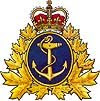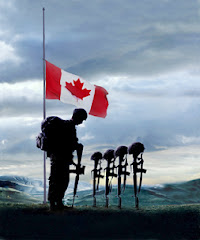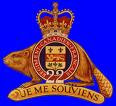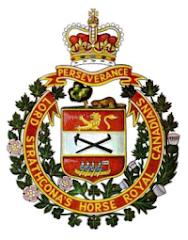
And finally for today:
The Book HSUS and PETA Don’t Want You to Read
The Consumer Freedom interview with Redemption author Nathan Winograd.
Nathan Winograd is a Stanford Law School graduate and a former criminal prosecutor. He has also presided over America’s two most successful experiments in what’s become known as the “No-Kill” animal shelter movement. At SPCAs in San Francisco and Tompkins County, New York, Winograd showed that No-Kill animal sheltering -- the brand of hands-on animal care that deep-pocketed animal “rights” groups like PETA and the Humane Society of the United States (HSUS) ironically oppose -- can work.
In his book Redemption, Winograd argues that the idea of pet overpopulation in America is a myth. PETA cites this “overpopulation” as the reason it kills nearly 90 percent of the dogs and cats it takes in. And the Humane Society of the United States (HSUS) literally wrote the book on a system of animal sheltering that seems resigned to killing healthy pets out of sheer laziness, instead of looking for alternatives.
The Book HSUS and PETA Don’t Want You to Read
The Consumer Freedom interview with Redemption author Nathan Winograd.
Nathan Winograd is a Stanford Law School graduate and a former criminal prosecutor. He has also presided over America’s two most successful experiments in what’s become known as the “No-Kill” animal shelter movement. At SPCAs in San Francisco and Tompkins County, New York, Winograd showed that No-Kill animal sheltering -- the brand of hands-on animal care that deep-pocketed animal “rights” groups like PETA and the Humane Society of the United States (HSUS) ironically oppose -- can work.
In his book Redemption, Winograd argues that the idea of pet overpopulation in America is a myth. PETA cites this “overpopulation” as the reason it kills nearly 90 percent of the dogs and cats it takes in. And the Humane Society of the United States (HSUS) literally wrote the book on a system of animal sheltering that seems resigned to killing healthy pets out of sheer laziness, instead of looking for alternatives.
After we read Redemption, we had some tough questions for Winograd. And he graciously agreed to answer them.
CCF: Right on the cover of your book, you call the idea of pet overpopulation in the United States a "myth." Are you saying that there are enough homes for every healthy, unwanted pet?
Winograd: Yes. Based on the number of existing households with pets who have a pet die or run away, more homes potentially become available each year for cats than the number of cats who enter shelters, while more than twice as many homes potentially become available each year for dogs than the number of dogs who enter shelters.
Put another way, every year more families are potentially looking to bring a new dog or cat into their home than the animals that enter shelters. And the market of homes (the number of homes which do not currently have a dog or cat but will acquire one) is expanding rapidly. If shelters increased their market share by just a few percentage points, we could be a No Kill nation right now. But we are far from it.
As a movement, the humane community has accepted the idea that the best shelters can do for homeless animals is to adopt out some and kill the rest. To try to avoid criticism for this, to justify a paltry number of adoptions, these groups have perpetuated the myth that there are simply more animals than homes, something that is patently false (even though most people believe it).
Redemption offers a stunning indictment of the Humane Society of the United States (HSUS). Why does such a wealthy animal rights organization appear so disinterested in saving the lives of cats and dogs?
HSUS is the wealthiest humane organization in the United States. Since its founding in the mid-1950s, it has grown in scope, size, and influence. It claims the support of some 10 million members, while its conference which caters to shelters is currently the largest nationwide. Given that, one would predict, expect and hope that it would be at the forefront of the No Kill movement, leading the way to ending the systematic killing of dogs and cats in U.S. shelters. But instead HSUS has been one of No Kill’s fiercest and most obstinate opponents.
One of the fundamental downsides of bureaucracies is their focus on self-preservation at the expense of their mission. Agencies like the Humane Society of the United States have ignored No Kill success and put the interest of animals -- indeed their very lives -- aside.
What would HSUS stand to lose if American animal shelters all moved toward a “No Kill” philosophy tomorrow?
Other than a few employees with a deplorable history of supporting the unnecessary killing of dogs and cats in shelters, and perhaps some longstanding relationships with shelter directors mired in killing, absolutely nothing. In fact, they would be hailed as pillars of compassion by the American public. That is what makes their position on this issue (historical and presently) so disturbing.
If you had HSUS's resources ($200 million in the bank and $150 million of income this year), how much progress could you make toward reforming our nation's animal shelters? What would you do first?
More money isn’t necessary to end the killing of savable dogs and cats in shelters. In fact, most of the programs and services necessary to save lives would actually cost these shelters less than what they are currently spending to warehouse animals and then kill them.
For example, adoptions generate revenue, they generate good will (which could be leveraged for future donations), and they lead to greater word-of-mouth publicity which leads to more adoptions and more revenue. Killing animals, by contrast, not only costs money (to end an animal’s life and dispose of the body), but it also makes the public less satisfied with the job a shelter is doing, especially as the shelter blames that same public for the problem. These are the people a shelter needs to embrace (in the form of adopters, volunteers, and donors) if it’s going to save animals’ lives.
Volunteers and foster homes also provide subsidized services, in which private individuals and rescue groups care for shelter animals at no cost to taxpayers. It is a cost-free way to save a great number of dogs and cats. But too many shelters turn these people away at the front door -- while the animals they are trying to help go out the back door in a body bag.
In short, animals are not dying because of lack of money in the vast majority of U.S. cities.
Take the municipal animal shelter in Austin, Texas for example. In 2000, its budget was $2.9 million. Now it’s $4.8 million. But the number of dogs and cats killed in Austin increased during this time. PETA spends around $30 million every year, but claims it can’t save 2,000 dogs and cats. Following the devastation of Hurricane Katrina, Americans donated over $32 million to the Humane Society of the United States, specifically to help the dogs and cats trapped in New Orleans.
They spent only a fraction of that money on the problem. What did they do with the rest?You have a pretty blunt assessment of PETA's long-standing habit of killing animals instead of working to place them in adoptive homes. Why should the public believe PETA's line about saving pigs and chickens if it's not willing to start with dogs and cats?
This, to me, is the great betrayal in PETA’s position. If groups like PETA openly champion the killing of dogs and cats in shelters, if they do not take the position that killing dogs and cats is inherently unethical and should be condemned, how do they expect to convince the public that pigs, chickens, and other animals -- with whom Americans do not have a close relationship -- should have more protections?
If the animal rights community, which claims to be the standard bearer for what our relationship with animals should be, approves of the idea of killing millions of animals in shelters, doesn’t that undermine their ultimate goals? The old adage “With friends like these, who needs enemies?” could not be more true.
What's beneath the surface of PETA's apparent hypocrisy here? Why do you think the group doesn't endorse a “No Kill” philosophy, or at least stop tasking its employees with killing pets?I can only think of one possibility. PETA’s founder, Ingrid Newkirk, previously worked at the Washington Humane Society in Washington, DC, a shelter that has historically been the subject of public criticism for high rates of shelter killing.
In fact, at a time when Stanford University was having great success with its program to save homeless cats on its campus, the Washington Humane Society opposed my effort to create a similar program on the Georgetown University campus. In the end, Georgetown sided with the Washington Humane Society, which embraced a campaign of extermination.
Few animal activists who follow PETA’s lead on the companion animal issue are probably aware that its founder’s former job was to kill homeless dogs and cats in a shelter that had a poor record for saving lives.
Isn't it a bit hypocritical for groups like PETA and HSUS to be front-and-center in the Michael Vick story?
Nobody with half a brain supports dog fighting, but isn't killing dogs out of sheer convenience just as nasty?
The thought of what those poor dogs went through is personally very painful to me. If the public pressure created by these groups led to Vick’s suspension from the NFL, a positive thing has been accomplished. If it leads to greater penalties for people who do this, again that is positive. And as a former Deputy District Attorney who prosecuted animal cruelty cases, I believe that if Michael Vick is found guilty, he should be punished severely.
But while PETA applauds the prosecution of Michael Vick, it fought similar efforts by a prosecutor in North Carolina who went after PETA employees for needlessly killing animals and dumping their bodies in supermarket trash bins.
And while PETA condemns Michael Vick for killing Pit Bull-type dogs, PETA itself is on record saying that each and every Pit Bull entering a U.S. animal shelter should be killed as a matter of policy -- including healthy and friendly dogs. By its actions, words, and deeds, PETA is condemning hundreds of thousands of dogs annually to death.
HSUS is no better. HSUS once called the mass extermination of alley cats the only “practical and humane” solution. Why is the needless killing of millions of cats “humane,” especially in the face of non-lethal lifesaving alternatives?
In your book, you mention briefly the connection between shelter adoption rates and retail pet sales. Can you flesh this out a bit? Does this indicate that there are plenty of homes for adoptable animals?
When San Francisco became the first city in the U.S. to save all healthy, homeless dogs and cats, and was effectively talking to the public about pet adoption, there was not a single pet store left in the city selling dogs and cats. It didn’t start out that way, but that was the result. Why? Because they couldn’t compete with the SPCA.
Americans want to do the right thing, and they saw shelter adoption as a way to save lives and bring the joys of animal companionship into their homes. By contrast, when you look at cities with high levels of shelter killing, you also tend to see large numbers of pet stores.
This tells me that the animals in these communities aren’t dying because “there are too many dogs and cats, and not enough homes” -- as the shelter directors want you to believe. If that were the case, you wouldn’t see so many pet retailers. They exist because there’s a market demand for dogs and cats. And because the shelters are doing a lousy job at adopting to the community.
You make a pretty convincing case that whatever pet "overpopulation" exists in the U.S. is the fault of poorly run shelters, not the public that typically gets blamed for creating the problem. But surely there's something the public can do to help reverse the current situation. What's your bottom-line advice for John Q. Consumer?
We need to reclaim these institutions. The agencies that the public expects to protect homeless pets are instead killing more than five million of them every year. Lifesaving alternatives have existed for decades. But too many of these agencies remain mired in the “kill” philosophy of the past, unwilling to explore and adopt methods that save lives. This is a breach of their public trust.
We need to reform animal shelters through lobbying, by making demands at the local government level, and by withholding contributions until they change. We need to hit them right back for advocating killing by using a tactic they understand: the boycott.
Do not donate to HSUS or any other shelter or agency which refuses to embrace a No Kill philosophy. Let them know that when they decide to do right by the animals, you will be ready to open your checkbook.
In the end, there may be an overpopulation problem in the United States, but it is not the one we traditionally define. What we are actually suffering from -- what is actually killing a high number of animals -- is an overpopulation of lazy and complacent shelter directors.
A culture of lifesaving is not possible without wholesale regime change in shelters, and in national animal protection groups. So the most important single act -- and the crucial first step -- is to fire the current leadership of shelters across the country. That is what the public should demand.
Redemption: The Myth of Pet Overpopulation and the No Kill Revolution in America is available online from Amazon.com and other retailers. Every copy sold is guaranteed to raise the blood pressure of the wrong-headed activists who run PETA and HSUS.



























